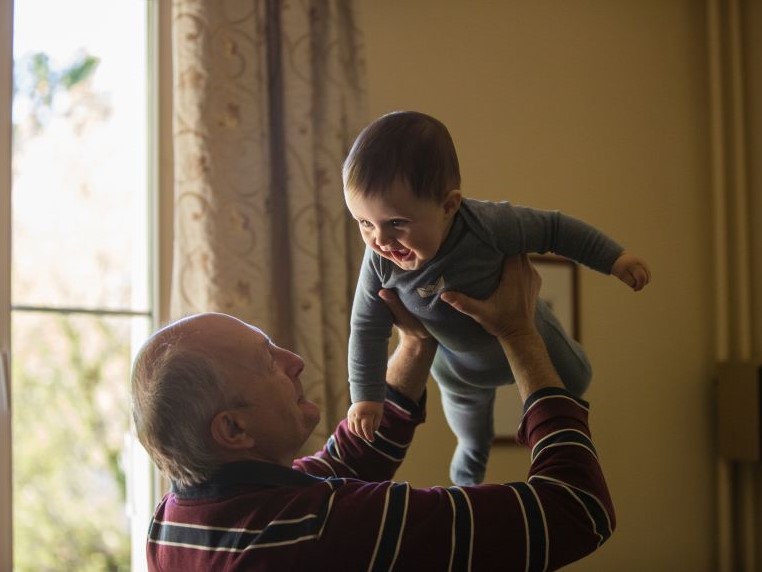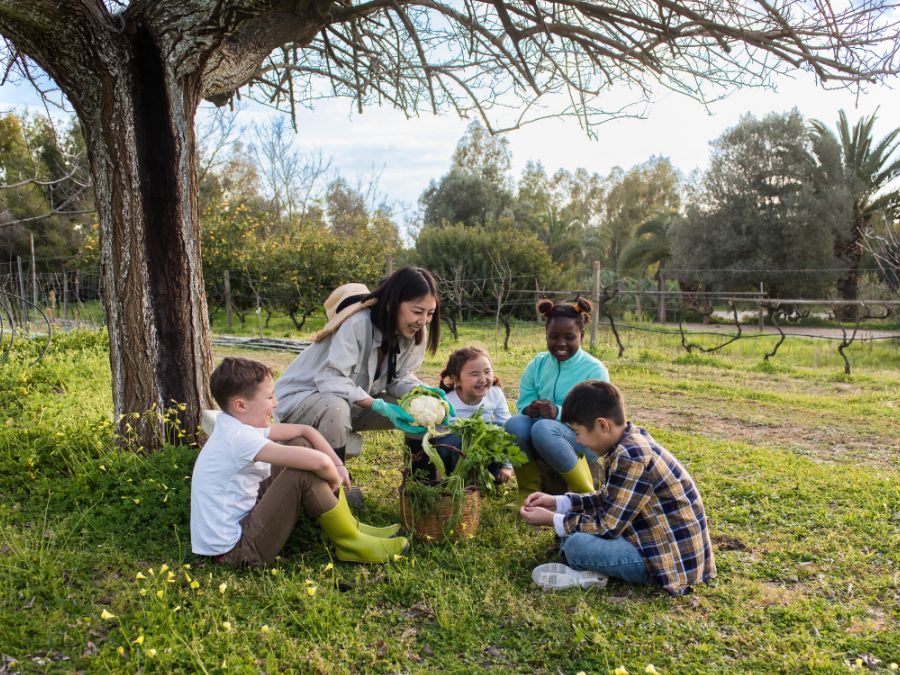
At HOPE, our vision is for all children to have safe and equitable access to the Four Building Blocks. As April is Child Abuse Prevention Month, we want to share just some of the work that is moving that vision forward. Today, we are talking to Jennifer Jones, Chief Strategy Officer at Prevent Child Abuse America. Jennifer promotes child abuse prevention and positive childhood experiences in her daily work. Here, she shares why prevention is important for the well-being of children and families and how HOPE supports that work.
- Please introduce yourself and your work to our readers.
My name is Jennifer Jones, and I am the Chief Strategy Officer at Prevent Child Abuse America. We are the nation’s oldest and largest organization committed to preventing child abuse and neglect before it happens. We promote policies, programs, and resources informed by science that enable all kids, families, and communities to thrive – today, tomorrow, and for generations to come.
Our signature home visiting program, Healthy Families America (HFA), is in nearly 600 sites. It is also one of the most frequently implemented models with federal Maternal, Infant and Early Childhood Home Visiting (MIECHV) program funding. We provide resources and support to our statewide network of Prevent Child Abuse America chapters in 43 states, and the District of Columbia, and we partner with them to advance our missions and to promote thriving children, families, and communities. Our national policy team advocates at the federal level for the Child Abuse Prevention and Treatment Act or CAPTA, MIECHV, and other key federal programs that help support children and families. We also assist our chapters with state policy. Our communications team works closely with our state chapter network to shift the conversation away from child abuse and neglect to prevention. HFA sites to articulate, elevate, and amplify our common message and mission.
I also have to put in a plug for Child Abuse Prevention month, which is in April! We hope everyone will join us in sharing our message and spreading the word. We have some great resources on our website that people can use in their efforts.
- Can you share your HOPE story? How did you hear about HOPE and what made you want to get involved?
I met Dr. Sege and Dr. Linkenbach in the early 2000s when I was with the Wisconsin Children’s Trust Fund. We were involved in positive community norms work with Dr. Linkenbach at the time. We were also leading the ACEs work in the state and working with our state Behavioral Risk Factor Surveillance System (BRFSS) survey on the ACEs optional module. Dr. Sege and Dr. Linkenbach and I were chatting about how we needed data to show the positive and resilience. So, we decided to work on getting questions about positive childhood experiences in the Wisconsin BRFSS. I have been involved ever since!
- How does HOPE fit into your work with PCAA?
Our vision at Prevent Child Abuse America is hopeful….
We want to experience a world where all children grow up happy and healthy in supportive families and communities. In essence, we are all about setting the context for hopeful and thriving children and families, by also tending to their living conditions. One of the HOPE Building Blocks, as you know is “safe, equitable and stable environments.” When we think about child abuse prevention and building safe, equitable and stable environments, it means addressing the conditions in which people live, work, play and grow. We do that through our home visiting program, in partnership with our state chapters, and through our advocacy work. We can also grow hope in how we talk about childhood adversity and leave people with a sense of collective responsibility. We want everyone to feel that childhood adversity is possible to solve and prevent.
- Being a leader on the Wisconsin BRFSS project, how did those results change how we talk about child abuse and healing?
I learned about the ACE Study in early 2000s, and brought Dr. Rob Anda, along with Dr. Bruce Perry, to Wisconsin to present on early childhood brain development, trauma, adversity, and of course ACEs. At the time, I was a child welfare policy advisor at the then Department of Health and Family Services. We started to think about strategic and intentional ways to weave that knowledge and science into our work. Dr. Perry began doing case specific consultations with our county and state child welfare workers.
It was 2010, I was at the Children’s Trust Fund then, when we first raised the funds to include the optional ACEs module into our WI BRFSS. It was the first time we had Wisconsin specific data on ACEs, and I think that really helped us in terms of public awareness and advocacy. We made specific policy and systems recommendations in that report and started to move on those. One of the findings from that survey was that 64% of those individuals that had the one ACE of growing up with a parent who was incarcerated had four or more ACEs. That really had an impact on some of us, and so we began to work with the Department of Corrections to understand the prevalence of ACEs for people in prison and to try to make some movement on services and interventions for children with incarcerated parents.
In the 2014 BRFSS, we decided it would be important to understand poverty’s impact on later mental and physical health. So, we brought together a small group of people – experts in the field, including Dr. Rob Anda, Dr. Melissa Merrick, and Dr. Kristi Shook Slack and we created a handful of questions related to poverty and neglect. Those were included in our 2014 BRFSS. And then in 2015, after several conversations with Bob and Jeff, we had the opportunity to add questions specific to positive childhood experiences, and resilience. Our window of time to get the questions on the BRFSS was short so we decided to borrow already tested questions from Dr. Michael Ungar’s Child and Youth Resilience Measure. And that was the start of positive childhood experiences. We wrote a report on that data called Balancing ACEs with HOPE. Then, we partnered with Dr. Christina Bethell at Johns Hopkins University to do deeper analysis on the data and that resulted in our JAMA pediatric article – that to date has thousands of views. It has really helped inform the field and started to move us from always focusing on ACEs to now understanding that positive childhood experiences are even more important to our physical and mental health and well-being.
In 2021, Prevent Child Abuse America joined forces with Social Current and FrameWorks Institute to update our 2004 prevention framing brief. It’s important that in order to make the case for the policies and strategies we need to ensure that every child grows up in a safe, stable, nurturing environment – one of the building blocks of HOPE – the way we talk about childhood adversity needs to include the factors that help shape those environments, and spark a sense of realistic hope.
We have named the campaign to implement the recommendations “Building Better Childhoods,” and we will be launching a new website on April 6th in partnership with Social Current and FrameWorks Institute that includes creative assets, a reframing toolkit and other resources for the field to use. The Building Better Childhoods campaign and website were created by 2-Story and made possible with financial support from Casey Family Programs.
- What is one thing you would want people working in child abuse prevention to know about HOPE?
Our field has spent most of its young life, focused on the negative – on childhood adversity and ACEs, and that is important, and it is what we knew at the time. We thought it was critical to help people understand the problem – and now they do. We need to continue to move down the hopeful path – while not disregarding the reality of the problem of child abuse and neglect – balancing ACEs with hope if you will. There is still much we need to learn and know about positive childhood experiences and about implementing the HOPE framework, and we should invest our time and resources in that work. We should do more research and create more innovative approaches and strategies that focus on the positive and HOPE.
- Is there anything that you would like to share that has not been asked?
Recently, I was on a call, and someone was talking about a survey they had conducted around ACEs. They found that 80% of the general public was unaware of adverse childhood experiences and the ACEs study. Which was incredibly surprising to me because that is all you hear about in our field. But it made me think about the fact that we still have a long way to go, and we have the opportunity to reframe the conversation using the framing recommendations that child adversity is a public issue. It is solvable and it is preventable. And that leaves us all with a lot of hope!
Photo by Johnny Cohen on Unsplash


